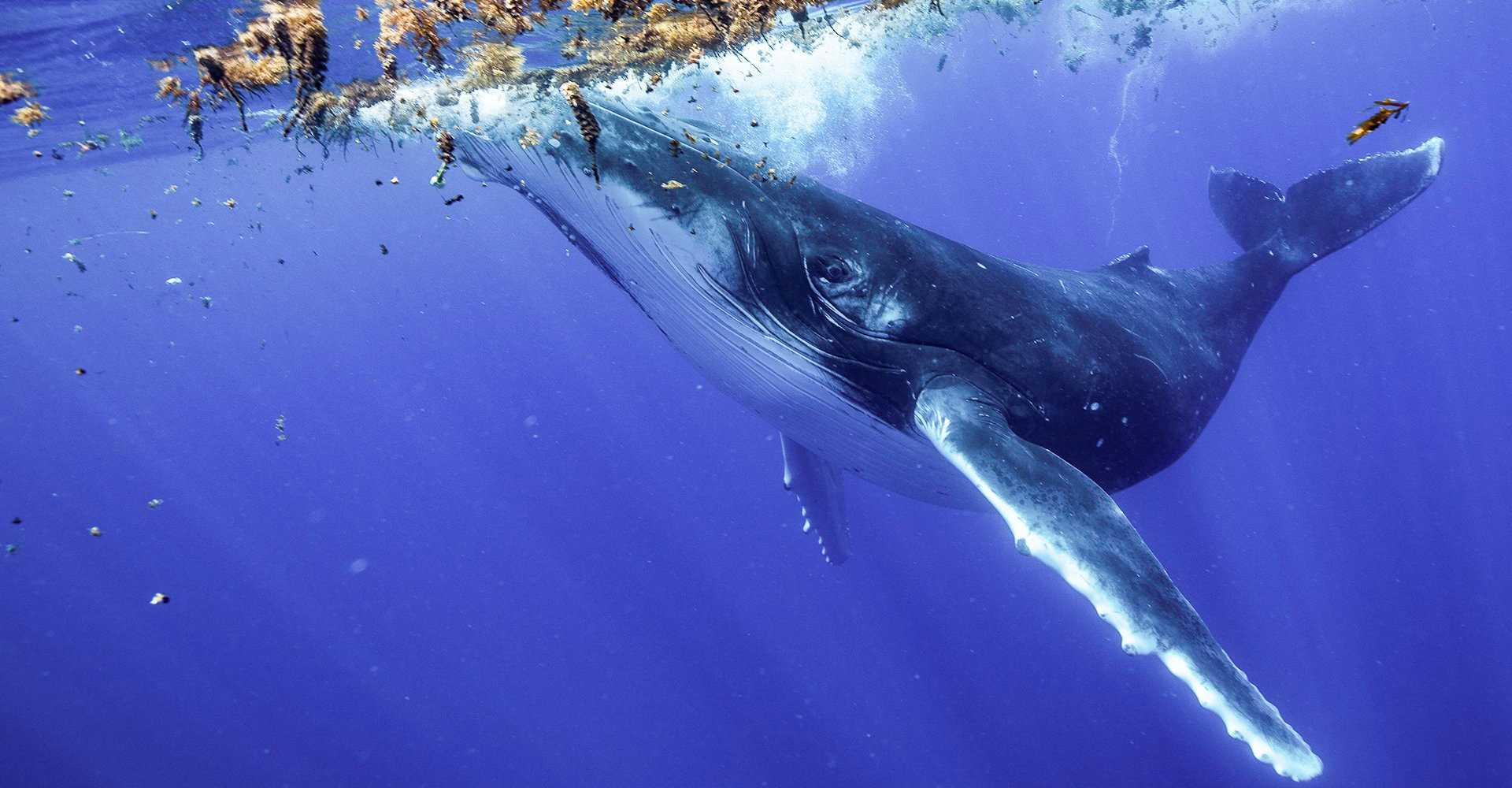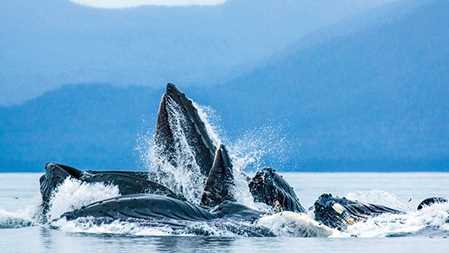Oct 2025
7 Min Read

Order: Cetacea
Family: Balaenopteridae
Genus: Megaptera
Species: M. novaeangliae
Range: All of the world’s oceans. Most populations follow a regular migration route—summering in polar and temperate waters to feed, wintering in tropical waters to mate and calve
Population: 84,000 and increasing
IUCN Red List Status: Least concern
How to Spot Them: Black or gray dorsal side, mottled black and white ventral side; pectoral fins nearly 1/3rd the length of their body; bump-like knobs (tubercles) on top of head and upper jaw; vertical ventral pleats along underside of jaw down to the stomach; can reach up to 52 feet long and 40 tons.
Discover fun facts about humpback whales.
Read more
You can find humpback whales all across the globe—from the icy waters of Antarctica and the Arctic to the tropical seas of the South Pacific and off the coast of Africa. But to witness one of their most complex and rare behaviors, you need to head to Southeast Alaska. There, in the pristine wilds, a very small and special population of humpbacks routinely engage in cooperative bubble-net feeding. Aside from the ahh-inducing spectacle it creates as whales lunge out of the water with mouths agape, what makes this behavior so remarkable is that it appears to be learned. Groups of non-related whales come together and divvy up the roles needed to execute the highly synchronized choreography that scores them a mega-sized meal. Get Inspired by Photos, Videos, Webinars, Stories, and Exclusive Offers. Sign Up
As baleen whales, humpbacks don’t have any teeth. Instead, 270 to 400 fringed baleen plates, made of keratin, help filter out water and trap prey inside. At their summer feeding grounds, whales gorge on a buffet of krill, plankton, and small schooling fish—up to a ton and a half per day! Those reserves will sustain them through a six-month fast when their energy is focused on migrating and breeding.
Watch the video above to learn more about these exceptional cetaceans.
